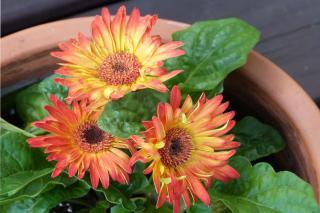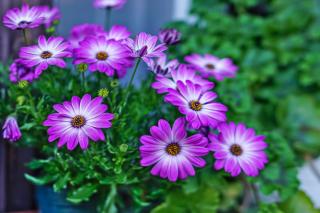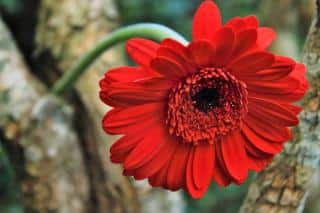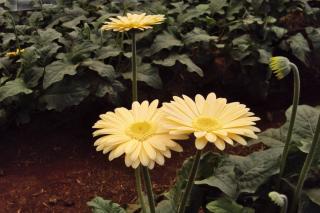

Gerbera is a cute indoor plant native to Africa that is found very appealing thanks to its cute flowers.
Gerbera main facts
Name – Gerbera
Family – Asteraceae
Type – indoor plant
Height – 12 to 16 inches (30 to 40 cm)
Exposure – well-lit
Foliage: evergreen – Flowering: all year round
Very often used in bouquets, it holds very well as days wear on and this makes it a favorite of florists.
Gerbera is a plant that can grow outdoors only in places where it doesn’t freeze. In temperate climates, it can grow and bloom in summer, but don’t expect it to survive over winter.
That’s why it is most often grown as an indoor plant.
Gerbera requires good soil mix to bloom again and again.
After that, every 2 years and preferably in spring, repot your gerbera in a pot one size larger (an inch or 3 cm wider across).
 Gerbera roots hate having too much water.
Gerbera roots hate having too much water.Propagation is possible in spring through crown division or by sowing seeds in a tray towards February-March.
Gerbera requires temperatures that hover between 64°F to 75°F (18°C to 24°C) and never drop below 57°F (13°C).
 The best location for your gerbera is a spot where there is proper light but no direct sun in summer.
The best location for your gerbera is a spot where there is proper light but no direct sun in summer.
You can put your gerbera very close to gloxinia because they both share the same growing conditions.
Regular but moderate watering is called for. Gerbera requires small amounts of water but requires it very often.
Keep the soil mix a bit moist and check that water drains properly.
 Provide liquid leaf plant fertilizer more or less once a month to extend the blooming to the maximum.
Provide liquid leaf plant fertilizer more or less once a month to extend the blooming to the maximum.
To retain a certain moisture level, it is best to put the pot on a bed of clay pebbles with water at the bottom.
Reduce watering and wait for the soil to be thoroughly dry deep down before watering again.
Most diseases targeted are the typical indoor plant diseases, red spider mite, scale insects, aphids and also powdery mildew.
 A fabulous indoor plant, it bestows us with daisy-shaped flowers that are pink, red, yellow or simply white.
A fabulous indoor plant, it bestows us with daisy-shaped flowers that are pink, red, yellow or simply white.
Gerbera is vulnerable to aphids. To avoid this, spray it often with a pyrethrum-based insect killer.
The ideal lifespan of a gerbera never extends longer than 3 years at most. You’ll have to replace it after this time span.
Cultivars that are most often used are Gerbera amesonii and Gerbera viridifolia. Smaller Germini are increasingly used by florists. Newer lines of outdoor hardy gerbera have also appeared, they’re usually called garvinea.
To preserve your gerbera as long as can be in a bouquet, it’s important to use clean water in a vase that has been thoroughly cleansed.
Read also:
Gerbera is also very beautiful as a floating flower to decorate a reception table in a wide bowl of water.